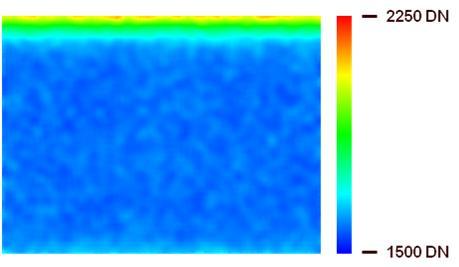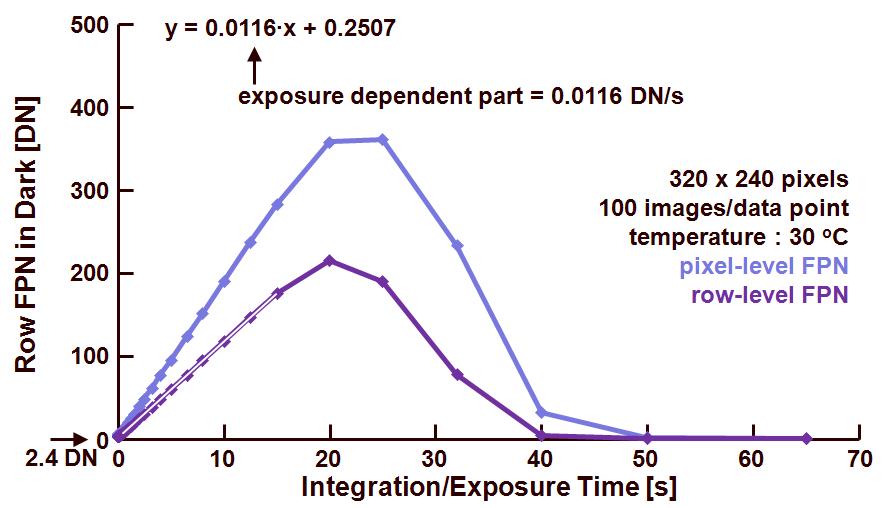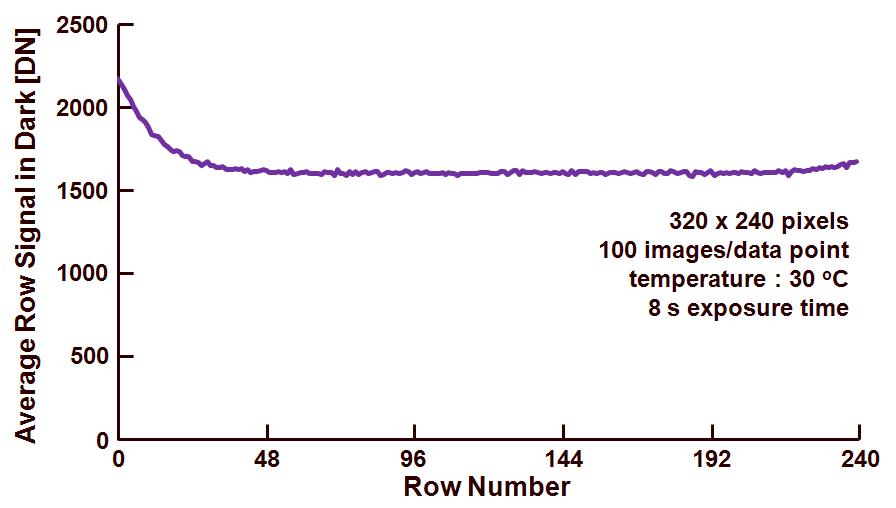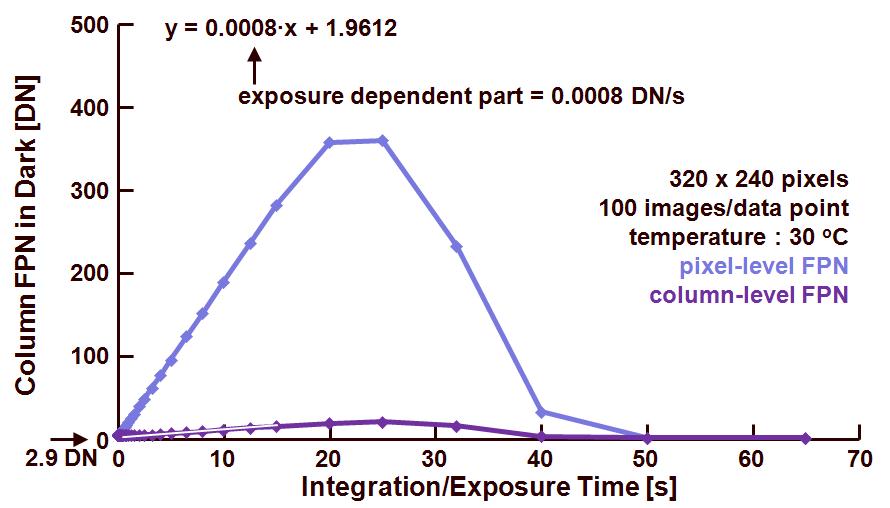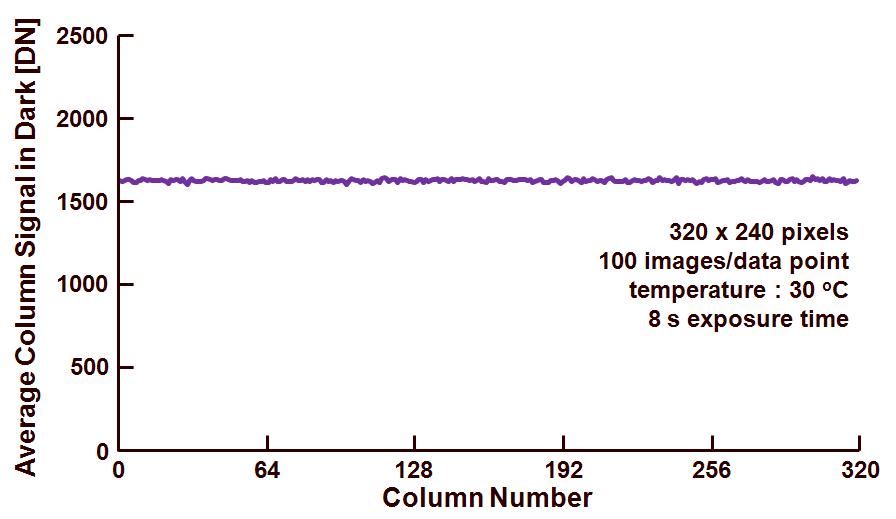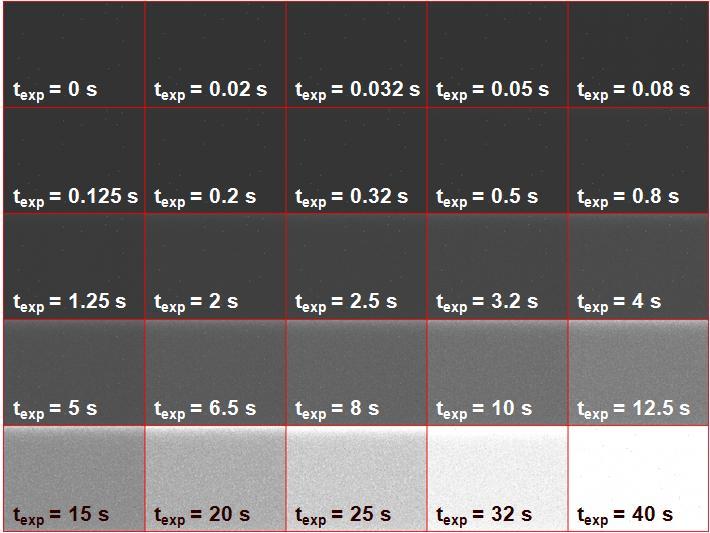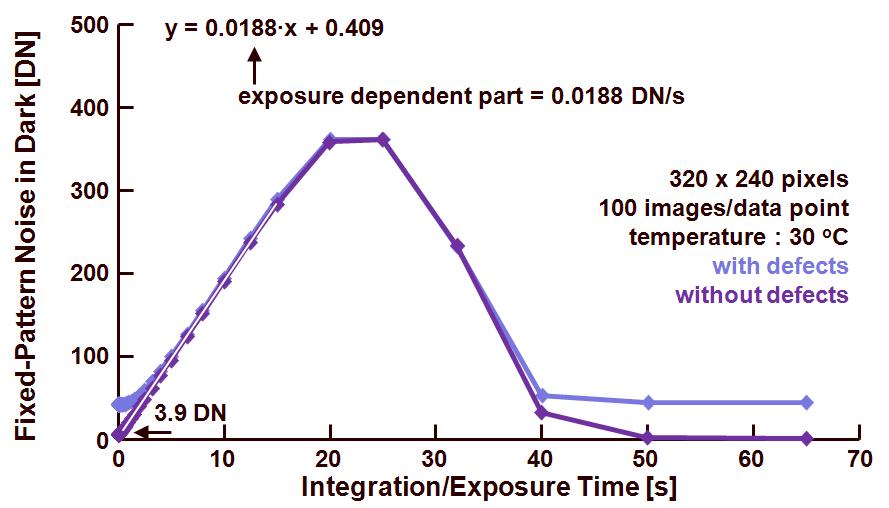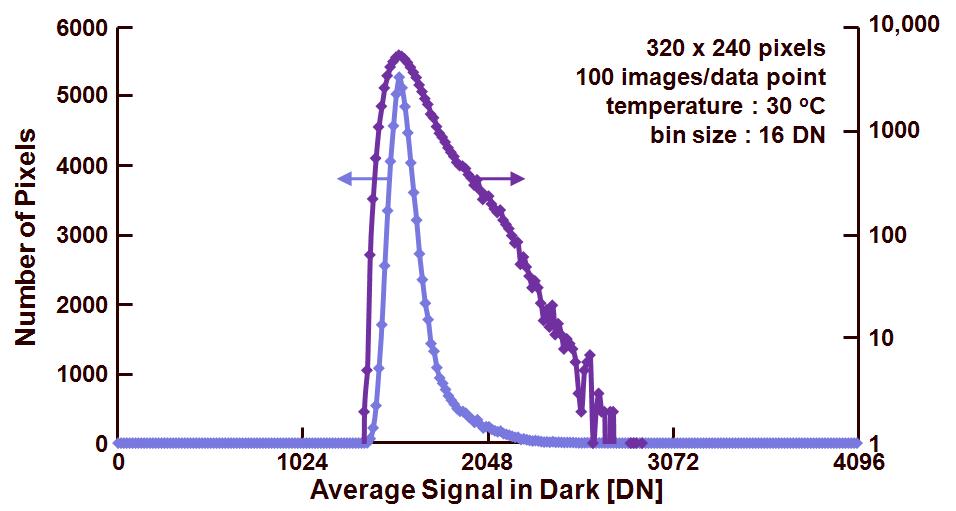The very first item that will be discussed in the new serie of blogs “How To Measure … ?” will be the average dark signal.
Actually, what is the dark average dark signal of a sensor or a camera ? By definition it is the output of the image sensor or the camera when the system is put in dark. This seems to be very straight forward, but a dark signal measurement needs to be done in fully dark conditions ! Just capping the lens of a camera to shield the sensor from incoming light is not enough. Still light can come from the sides or even from the back to the sensor. For that reason the camera needs to be 100 % shielded from “surrounding” light as well. In addition to a capped lens, the measurement room can be made dark and/or the sensor can be covered with a black, non-transparent cloth.
On the other hand, the average dark signal delivered by a sensor or a camera will be composed out of several components :
– A fixed DC offset, very often introduced by the analog circuitry on pixel-, on column- and on chip-level, or by an extra black level offset,
– A thermal component, also known as the dark current or leakage current. This part is not just (exponentially) depending on the temperature but has a linear dependency on the exposure or integration time as well (at least if saturation of the sensor is not reached).
The simplest way to separate the DC offset from the thermal component is to perform measurements at several exposure or integration times. These measurements can be done by means of :
– A good old oscilloscope : in this way one can measure the average output voltage of a sensor or camera,
– The measurement of the reset-drain current. This technique is only applicable if the drain(s) of the reset transistor(s) is/are available through a separate connection. This is the case for CCD imagers, this is not the case for CMOS imagers. So CCDs do offer a very easy way of measuring the average output signal, just by measuring the average reset drain current. The relation between the measured reset drain current IRD and the average number of electrons in one pixel Npix is given by :
Npix = IRD/(q .Nfr .NH .NV)
with :
§ Npix : average number of electrons per pixel,
§ IRD : reset-drain current in [A],
§ q : charge of 1 electron [= 1.6?10-19 C],
§ Nfr : number of frames/s,
§ NH : total number of pixels in horizontal direction (including black reference pixels),
§ NV : total number of pixels in vertical direction (including black reference pixels).
– Grabbing images in dark by means of a frame-grabber and a computer. Once the data of the dark images is present in the computer, calculation of the average dark signal becomes very simple.
Figure 1 shows the outcome of an average dark signal measurement : at various exposure times and at 30 oC, multiple images are being grabbed, e.g. 25. At each exposure time all these images were averaged (to reduce thermal noise) and the averaged image is again averaged over all its pixels (to reduce fixed-pattern noise). In this measurement a sensor with 320 x 240 pixels is evaluated. So every dot in Figure 1 is the result of 320 x 240 x 25 = 1,920,000 pixels.
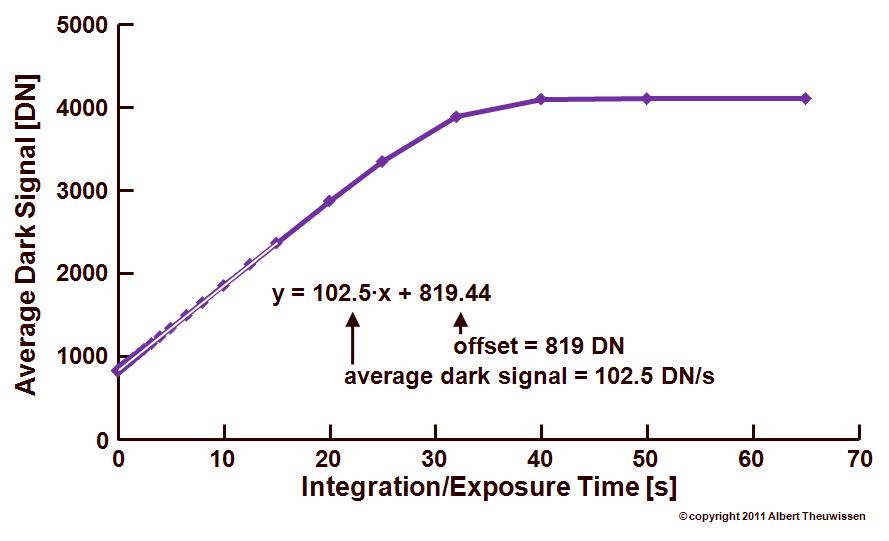
Figure 1 : average dark signal as a function of the exposure time, measured at 30 oC.
From the regression line for the linear part of the curve in Figure 1, the following numbers can be deduced :
– Offset, independent of the exposure time, being equal to 819 DN,
– Time depending part of the output signal, being the dark current, and equal to 102.5 DN/s.
How to express the average dark current of a sensor or camera ? As could be learned, this is only the exposure time depending part of the dark signal and it is a kind of leakage current, and for that reason the preferred way is to express it as :
– a current for the whole sensor,
– a current density per cm2, or per pixel (in that case numbers can be very small !),
– number of electrons per pixel and per second.
Other ways of expressing the dark current are :
– digital numbers (DN) per pixel and per second,
– voltage per pixel and per second.
In the latter two cases, the numbers indicated do include also the conversion gain of the sensor. Interpretation of the results is then becoming tricky ! On the other hand, if the results need to be expressed as a current, the conversion gain needs to be known. (Regular readers of this blog should know in the mean time how to extract the conversion gain, it will be repeated at a later stage of this blog. But at this point in the evaluation of the sensor the conversion gain is not yet kwown, which does not allow to express the dark signal as a current.)
“There is a warning sign on the road ahead” :
– It is clear that the average dark signal is depending on the exposure time, so accurately measuring or defining this parameter is very important,
– The average dark signal is exponentially depending on the temperature. As a consequence, the temperature of the device under test needs to be stabilized with an accuracy of 1OC, a change of 1OC in device temperature can result in 10 % deviation of the dark signal. Notice that the device temperature is not necessarily also room temperature or vice versa ! If the outcome of the average dark signal measurement is used for calibration purposes, the exact knowledge of the device temperature becomes of crucial importance,
– At this moment in the discussion, there is not yet any interest in the temporal noise behaviour of the sensor or camera. To limit the influence of the temporal noise on the measurements it is recommended to take many images in dark and averaged them on pixel level. In this way the temporal noise will be averaged out,
– The dark signal will change from pixel to pixel (see one of the next blogs) and can also be influenced by a shading component (slowly varying from one side of the sensor to the other side of the sensor). Non-uniformities and shading are both included in the average output of the sensor on dark. Or, the average dark signal does not tell anything about the uniformity of it !
– How is the output data of a camera presented to the user : with or without dark level or black compensation ? In the case the data is available without dark level compensation (also called “absolute dark reference” or “absolute black”), the measurement and calculation of the dark signal is very straight forward and can be done as shown above. In the case the data is available with dark level compensation (also called “relative dark reference” or “relative black”), the measurement of the average dark signal is becoming a bit more tricky. In the latter situation, a characterization through noise measurements can be done. Noise measurements will follow later in another blog. In this blog only data with an absolute dark reference was discussed.
Albert, 25-08-2011.
